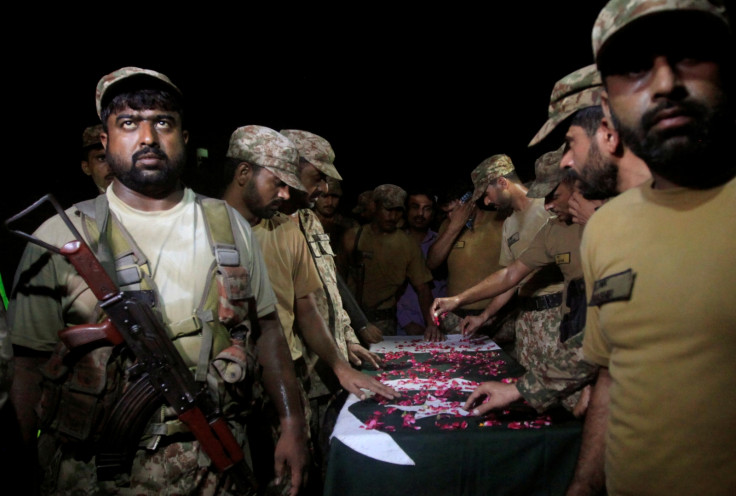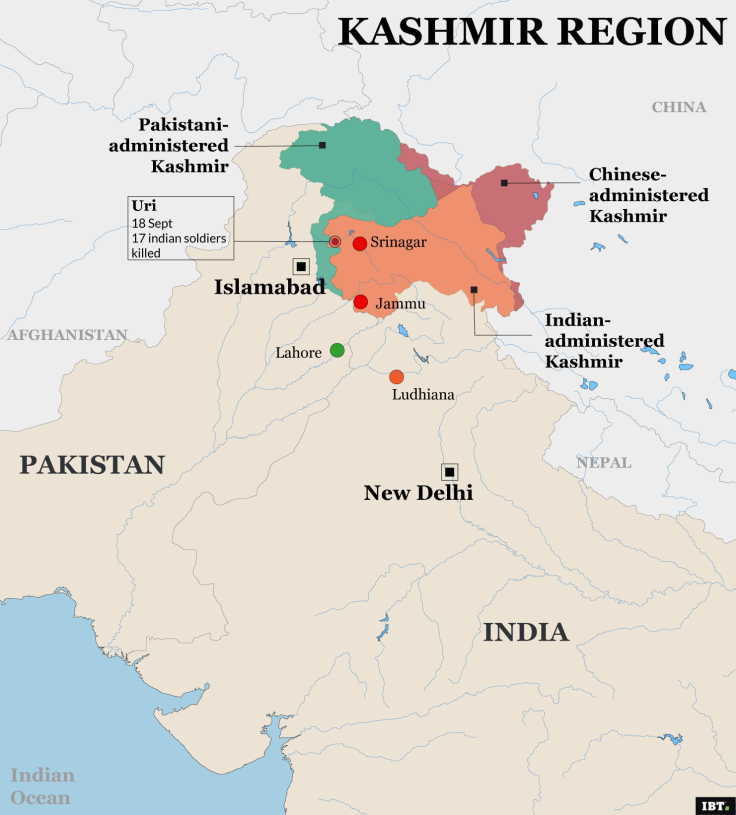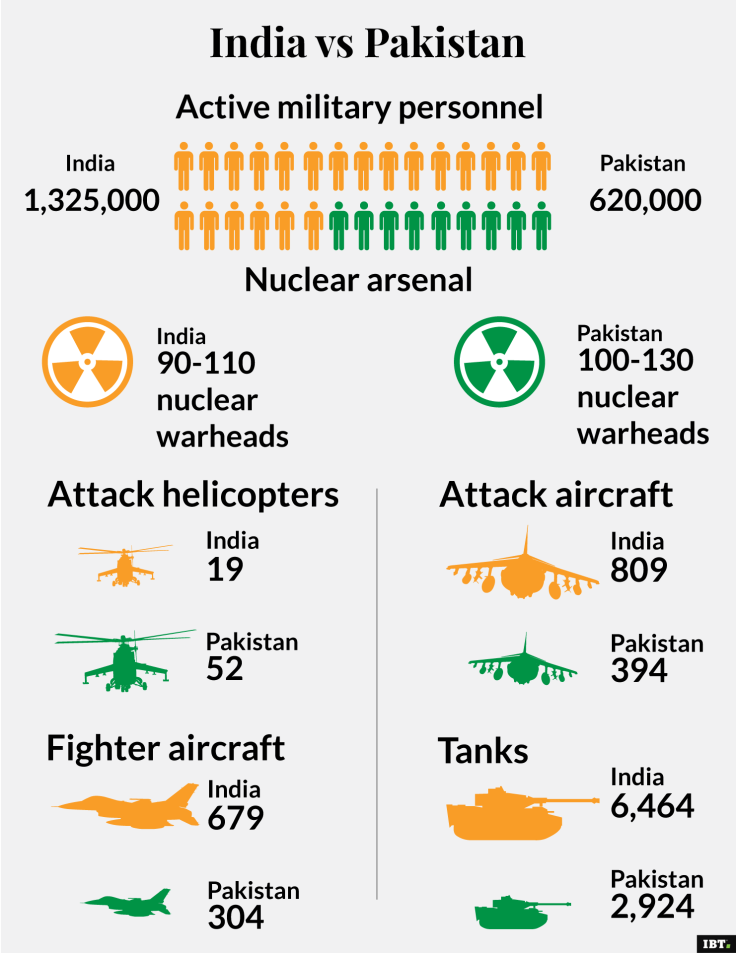India vs Pakistan: How do the sub-continent's two nuclear powers shape up amidst Kashmir dispute?
India's military might dwarfs Pakistan, but the two are evenly matched on nuclear weapons.

India's evacuation of 10,000 villagers living near the border with Pakistan after an Indian cross-border raid into Pakistan-administered Kashmir on Thursday (29 September) has only served to heighten fears that the shaky 2003 ceasefire in the contested Himalayan region could break down.
Indian Prime Minister Narendra Modi has taken a hard line on Pakistan over raids by militants in Kashmir in recent weeks, culminating in the strikes on suspected militants that India says were plotting to carry out attacks on its soldiers across the border.
India's admission of the raids was highly unusual and has been greeted with scepticism in Pakistan, with newspapers casting doubt that the so-called "surgical strikes" ever took place. Pakistani Prime Minister Nawaz Sharif is due to hold a cabinet meeting on Friday (30 September) amid rising tensions.
India and Pakistan have fought three wars since they gained independence in 1947 and have been close to war at least twice since developing nuclear weapons. In the 1990s, it was reported that Pakistani planes carrying nuclear missiles were left on the runway with engines running 24 hours a day.
Modi has been under pressure to take a harder line with Pakistan by Hindu nationalists, on which he relies for his support, particularly after 19 soldiers were killed in a militant attack on an Indian army base in Kashmir on 18 September.

Modi was a long-term critic of previous government's failures to combat a boisterous and combative Pakistan and now has to prove he will not shy from a fight.
"We're talking about a conservative and nationalist government that has pledged repeatedly to take a tougher line on Pakistan, only to shy away from retaliating against perceived Pakistani provocations. Something had to be done to convince the Indian public that its government is willing to act tough as well as talk tough," Michael Kugelman, an analyst at the Wilson Center in Washington, told Time.
But how far will Modi be willing to go? An Indian security official told Reuters on Friday that the new Indian approach is moving from a "defensive posture to defensive offense", under which India works on the vulnerabilities of Pakistan – its economy, internal security and international image as an unstable nation, home to militant Islamist groups.
"The objective is not just to go across the border and kill 10-12 people. The objective is to bring about a change in Pakistani behaviour, and for that you need to move on multiple levels. The strategy will involve all instruments of national power. Military is only one of the options," he said.
As well as being a far bigger country with an economy seven times that of Pakistan, India has diplomatic advantages should the conflict escalate. It has strong relations with the US as well as with Israel, which Indian Foreign Minister Sushma Swaraj visited in January.
It also has far larger military resources. India's army is 1.2 million strong compared to Pakistan's 550,000, although Islamabad has 500,000 reserves to Delhi's 100,000. The Pakistani navy is half the size of India's, at 24,400 regulars compared to 58,000. Similarly, the Indian air force is 127,000 to Pakistan's 45,000, according to the latest data provided to IBTimesUK by Janes/IHS (see graphic).
On the Indian side of the border, Delhi has two command centres facing Pakistan, the northern and western command, which include 10 infantry divisions and artillery including missile and rocket placements. Pakistan has seven infantry divisions stationed in Rawalpindi, Lahore and Gujranwala.
As during the confrontation with India in 2002, it could receive reinforcements from bases in Quetta and Peshawar. India, however, "has a grave shortage of self-propelled artillery and tanks."

India has a distinct advantage in the air, however, and the Pakistani air force would struggle to prevent Indian planes from dominating in the early stages of the conflict. It will likely play a defensive role, protecting military bases, power plants and nuclear weapons facilities, Janes/HIS said.
"Given that [Pakistan has] no air force reserves, the PAF would experience problems in mounting and sustaining operations over three weeks to a month in case of a full-blown conflict with India," it said.
When it comes to nuclear weapons, the payload and delivery capability of both country's arsenals is more important than the numbers. Pakistan has between 100 and 130 warheads to India's 90 to 110. Pakistan would use its Shaheen 1A and Shaheen 3A rockets and stocks of cruise missiles to deliver weapons while India would use its Mirage-2000s and Jaguar planes.

The world will be hoping that it doesn't come to that. A 2006 study by climatologists estimated that if India and Pakistan went to war and used 50 nuclear bombs – each as powerful as the weapons that hit Hiroshima in 1945 – at least 20 million would be killed in the first week from the blast and after effects.
They also found that "the firestorms generated by these nuclear explosions would loft about 5 million tons of black soot high into the atmosphere. The soot would block out sunlight, dropping surface temperatures across the planet by an average of 1.3 degrees Celsius."
© Copyright IBTimes 2024. All rights reserved.









